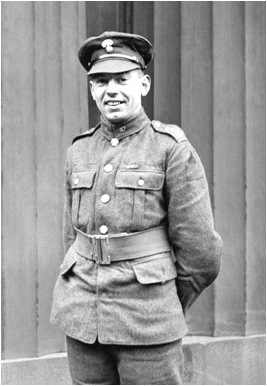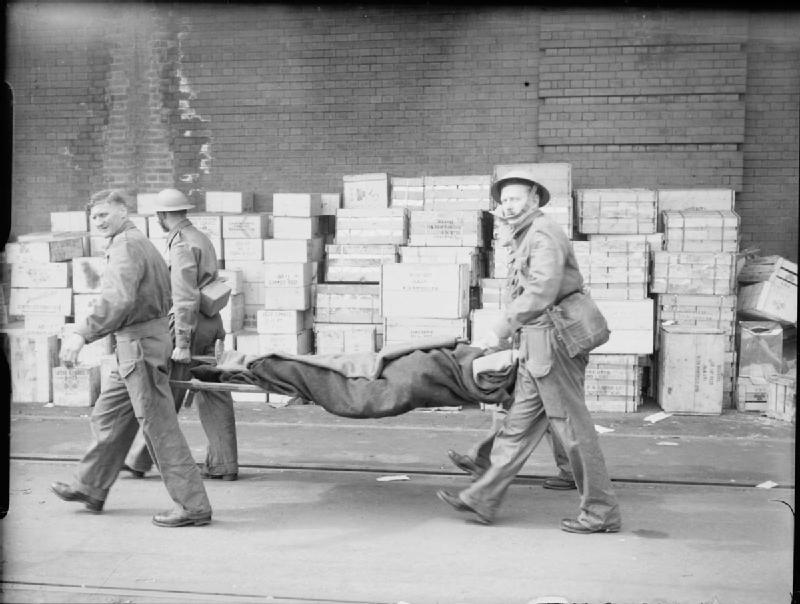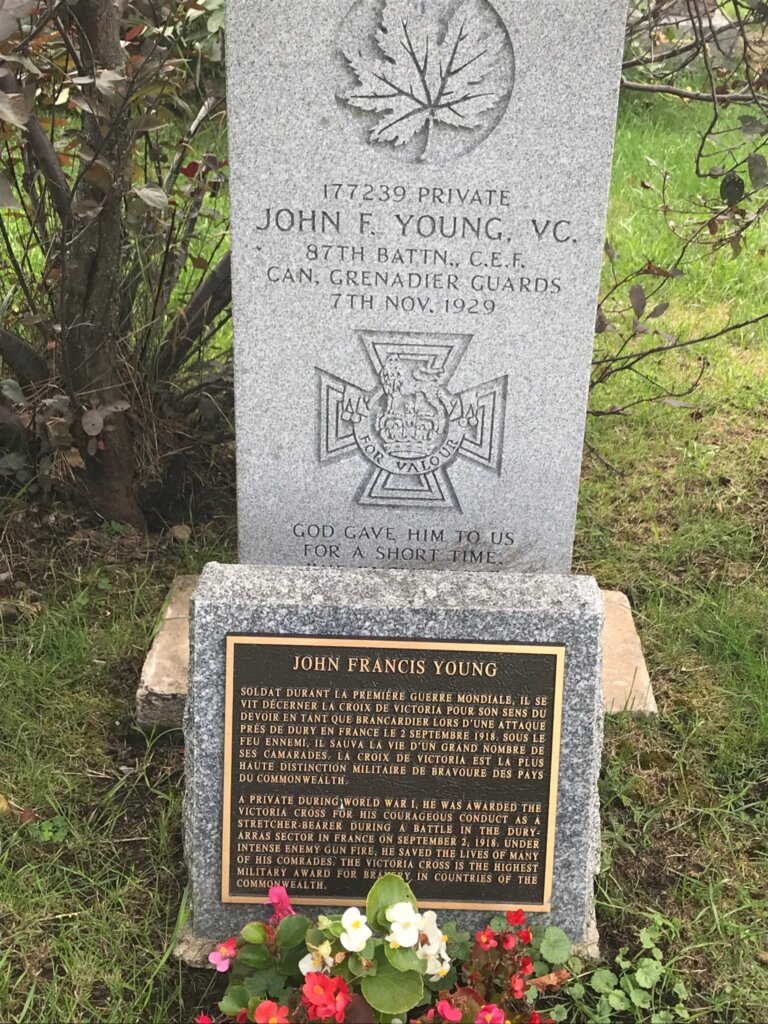
The 25-year-old stretcher-bearer persevered amid the fury of German shelling and machine-gun fire, risking life and limb to save his comrades on the battlefield. He was awarded the Victoria Cross for his actions. And 105 years later, Young is still remembered as the Canadian bearer with a bulldog spirit.
“Private Young chose to serve his country unarmed, and was awarded the country’s highest honour for his bravery,” said James Whitham, director-general of the Canadian War Museum, in a media release in February 2012 after the facility acquired Young’s VC.

“The stretcher bearer is literally the lifeline between the sick/wounded soldier in the field and the medical care behind the front lines.”
Young was born in Kidderminster, England, on Jan. 14, 1893, and lived there until 1912 when his family immigrate to Canada. There, Young worked as a tobacco packer before the First World War took him back overseas. After enlisting, he was assigned to ‘D’ Company of the 87th Infantry Battalion, Quebec Regiment, on Oct. 20, 1915. Young would serve as a stretcher-bearer for the Canadian Expeditionary Force.
Often given just 10 weeks of training and a handbook, First World War stretcher-bearers found the real learning began on the battlefield. Trudging through mud, locating screams for help and dressing wounds amid enemy fire were all part of the job as a non-commissioned member of the Canadian Army Medical Corps.
“The stretcher bearer is literally the lifeline between the sick/wounded soldier in the field and the medical care behind the front lines,” The Military Museums of Calgary wrote on its website.
“As volunteers, they were motivated by a deep desire to save their brothers-in-arms,” wrote Heeg .
Young’s desire to save lives compelled him to follow the Canadian Corps to a ridge near Dury in northern France in September 1918. Part of the Hundred Days Offensive, the Canadians launched a critical attack on the German defensive line that ran through the cities of Drocourt and Quéant.
Driving back droves of Germans on Sept. 2, Young’s company faced heavy fire from both flanks and suffered heavy casualties that stalled their movements. Young, exposed and unarmed, journeyed through machine-gun rounds and shelling to dress the wounded. And when those dressings ran out, he returned to company headquarters to restock, then ventured back into no-mans land.
“This work he continued for over an hour, displaying throughout the most absolute fearlessness,” noted his citation.
As German artillery fire withered, Young organized stretcher parties, leading the evacuation of more than a dozen men, even after the Germans released mustard gas.
“All through the operations of 2nd, 3rd, and 4th September Pte. Young continued to show the greatest valour and devotion to duty,” the citation continued.
For his days-long bravado, Young was the only member of his company awarded the VC for his actions during the attack. With much pomp and circumstance, he received the honour from King George V on April 30, 1919.

Unfortunately for Young, he contracted tuberculosis, most likely from mustard gas exposure.
The war’s end brought new beginnings for Young, who married Ida May Thatcher that same April in his hometown. Returning to Montreal to resume his work as a tobacco packer, Young continued his military exploits in the local militia, where he rose to the rank of sergeant.
Unfortunately for Young, he contracted tuberculosis, most likely from mustard gas exposure. He died in a Sainte-Agathe-des-Monts, Que., sanitorium on Nov. 7, 1929, at the age of 36.
Young’s legacy, however, lives on, with his Victoria Cross among 43 on display at the Canadian War Museum in Ottawa. Additionally, in 2018, Young’s war service was commemorated across the pond, where the English town of Kidderminster dedicated a paving stone to the stretcher-bearer outside the church he was married in.
“The story of John Francis Young,” said Whitman, “illustrates that heroism on the battlefield takes many forms.”
Advertisement












